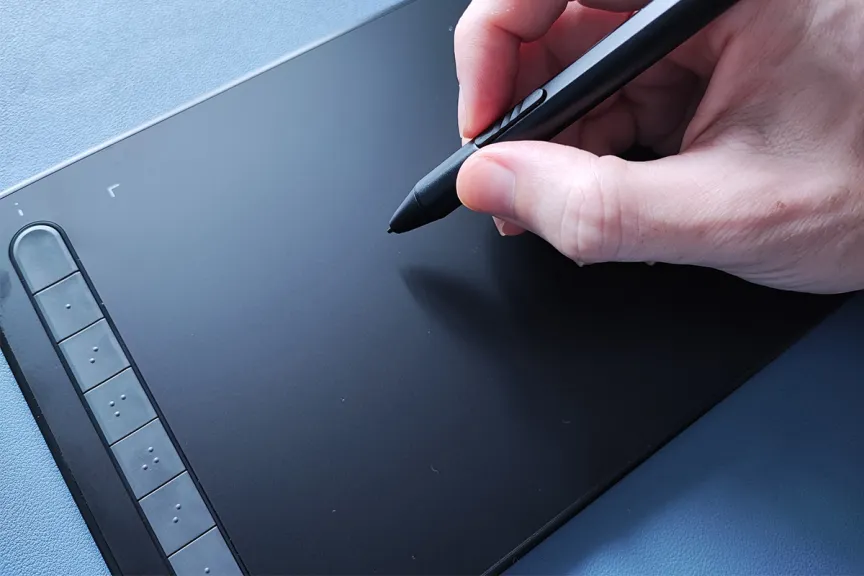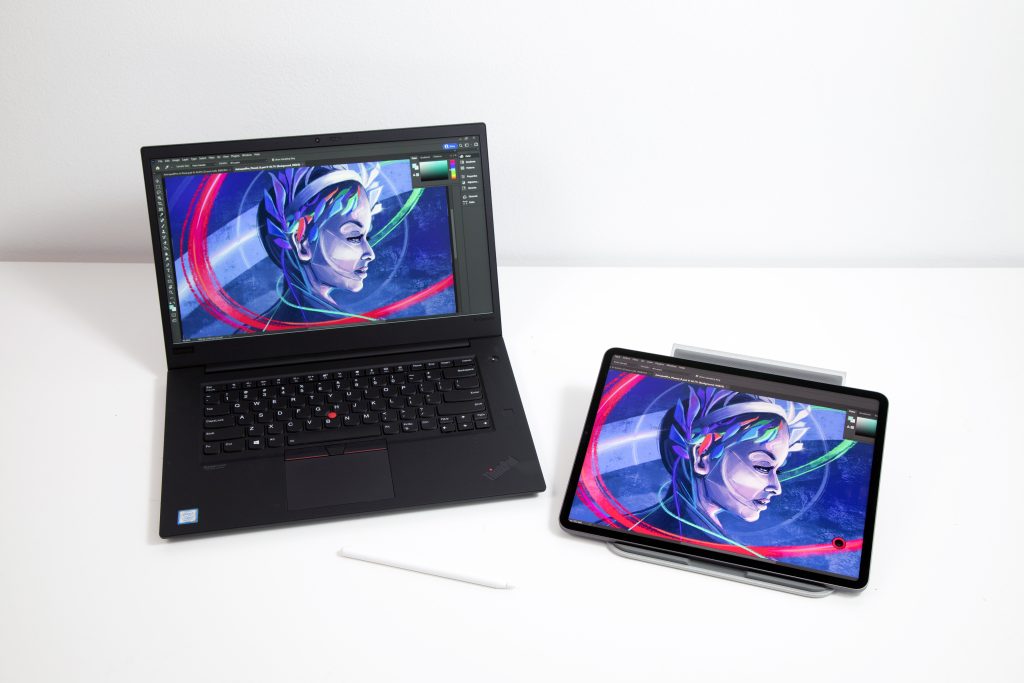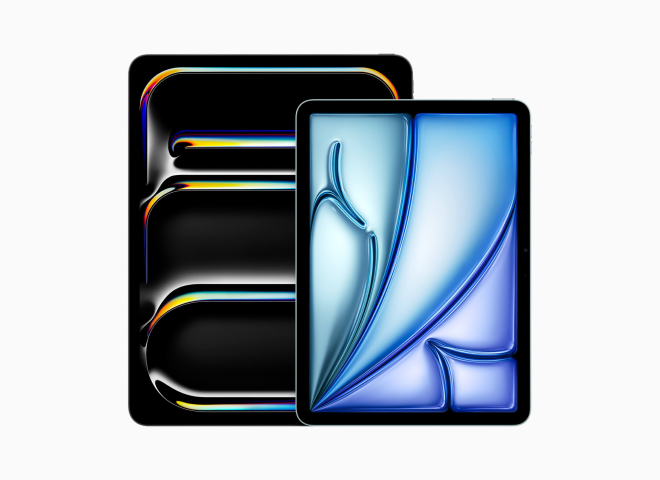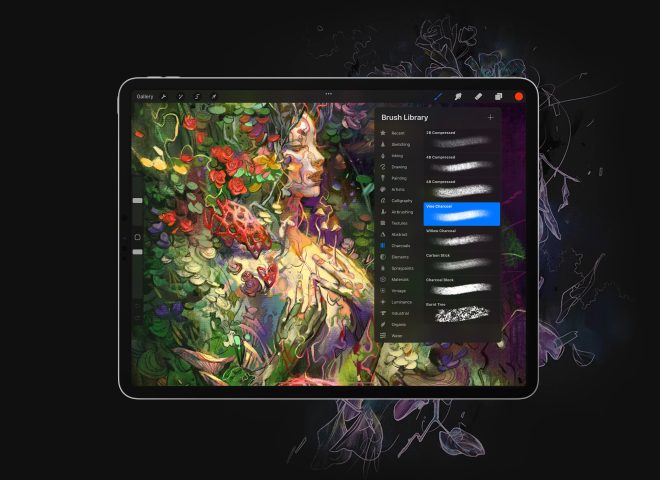When digital artists transition from pen and paper to screen and stylus, they face many different options. More often than not, digital drawing tools demand a high upfront cost, making the options seem even more confusing.
If you are indecisive about digital art tools and accessories, you are not alone. “Should I get a pen tablet or a pen display?” is one of the most common questions that digital artists ask themselves when getting started. These tools often get mistaken for one another, and they look strikingly similar.
So, what are the pros and cons of a drawing tablet with and without a screen? Let’s dive into both digital art accessories and settle the debate over pen tablets vs. pen displays.
What Is a Pen Tablet?

Pen tablets do not have screens. Instead, there is a flat surface that acts as a trackpad for your monitor. You use a stylus to draw, sketch, or write on the surface of the tablet, just like a piece of paper.
In an instant, the data travels from your tablet to your monitor, where you can see your creation. This allows you to create in your favorite desktop programs with a stylus instead of a mouse.
This type of digital drawing tool only works when it is connected to a laptop or monitor. Whatever you input onto the surface of the tablet will translate to your monitor.
Pros of Pen Tablets
- Stylus compatibility. Although you might have to buy a stylus separately, the good news is that many pen tablets are compatible with several digital art styluses, not just the branded, more expensive options.
- Big screen ideas. You can watch your digital art come to life on the big screen, right where it belongs. This has the added benefit of reducing eye strain.
- Affordable. In general, pen tablets are a lot more affordable than displays. They essentially act as input tablets, which are far cheaper to make.
- Shortcut keys. Most of these kinds of tablets have built-in buttons along the top or side. You can customize the buttons with whatever shortcuts suit your workflow.
Cons of Pen Tablets
- Extra expenses. Most brands include the stylus along with the tablet, but in some cases, you will have to purchase a stylus separately. And if you don’t already have one, you will have to buy a monitor/computer/laptop to connect to your tablet.
- Learning curve. Since you are working on a drawing tablet with no screen, it will probably take a little longer to figure things out. Of course, these tablets are designed to be intuitive, so it won’t take more than a few weeks to perfect your workflow.
Transform Your iPad into a Pen Tablet with Astropad Slate

If you already have an iPad and are considering getting a pen tablet, look no further than the iPad app Astropad Slate.
Astropad Slate transforms your iPad into a no-screen drawing tablet, allowing you to use your iPad as an input device for Mac.
Your Mac cursor mirrors your Apple Pencil, meaning you can write and draw inputs that seamlessly translate to your Mac screen.
- Draw on your favorite desktop programs with your Apple Pencil stylus
- Write into the handwriting input box, and the text will appear on your Mac
- Use one and two-finger touch gestures on your iPad to scroll and zoom on your Mac
What is a Pen Display?

Like pen tablets, pen displays also need to be connected to a desktop computer or laptop.
The main difference between the two is that pen displays have their own monitor. This means when you draw, sketch, or write on your pen display, it appears on both your tablet and your desktop screen.
Pros of Pen Displays
- Less of a learning curve. Display users can draw exactly as they would on a piece of paper. The learning curve is very minimal, making it perfect for beginners.
- Seamless, precise input. The screen displays exactly what you input. You do not have to continuously look up to check a monitor. Instead, you watch the screen as it produces your work in real time.
Cons of Pen Displays
- Higher upfront cost. Pen displays require a higher upfront cost than the screenless alternative, which may be a deciding factor for some.
Transform Your iPad into a Pen Display with Astropad Studio

Compatible with both Mac and PC, Astropad Studio allows you to mirror your favorite desktop creative apps onto your iPad and use your Apple Pencil as the input device.
Plus, you can completely customize your workflows with features built specifically for artists:
- Magic Gestures – Instantly change tools with fully customizable finger tap and Apple Pencil gestures.
- Shortcut Sidebar – Customizable sidebar shortcuts allow you to quickly access your favorite tools and automatically match whatever desktop application you’re using.
- Pressure Curves and Smoothing – Choose between hard and soft pressure curves and adjust your level of pressure smoothing to match your workflows.
Astropad Studio is compatible with all of your favorite creative programs including Illustrator, Photoshop, Clip Studio Paint, Krita, Blender, Zbrush, and more!
Is a Drawing Tablet With a Screen Better?
As you can see, the question of pen tablet vs. pen display is not so simple.
At first glance, graphics tablets and displays seem similar. They are even occasionally marketed under the same names! But when you take a closer look, the differences become apparent.
If you want a budget-friendly digital art tool, go for a pen tablet. And, if you already have a monitor or laptop, this option becomes even more affordable. Tablets are just as professional as displays, so you do not have to sacrifice your dream of making it big in the digital art world.
If your budget is a bit more flexible and you value precision with less of a learning curve, you might want to invest in a pen display. This type of tablet is an all-rounder; it does everything that a tablet does, and it also has the added benefit of providing an input screen.




